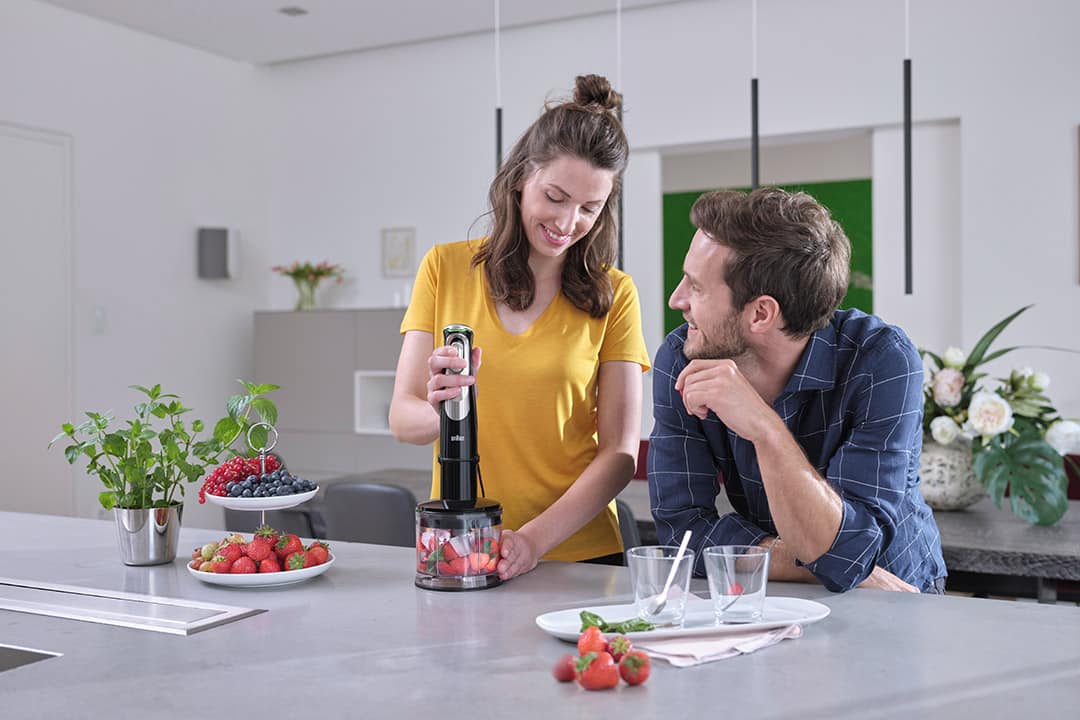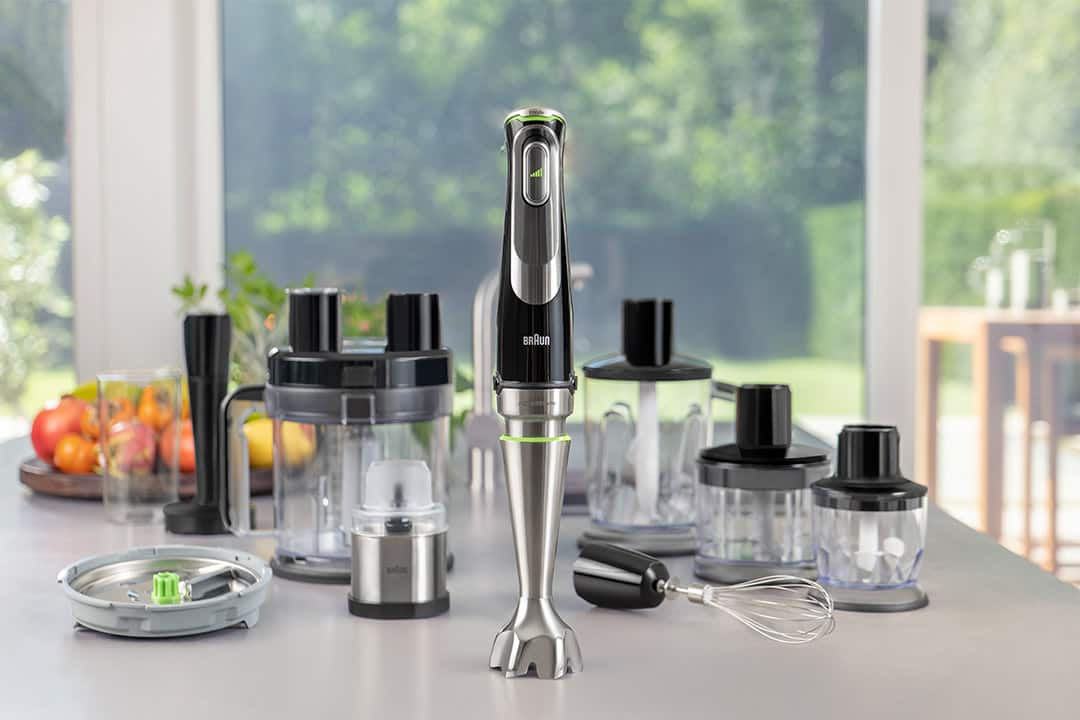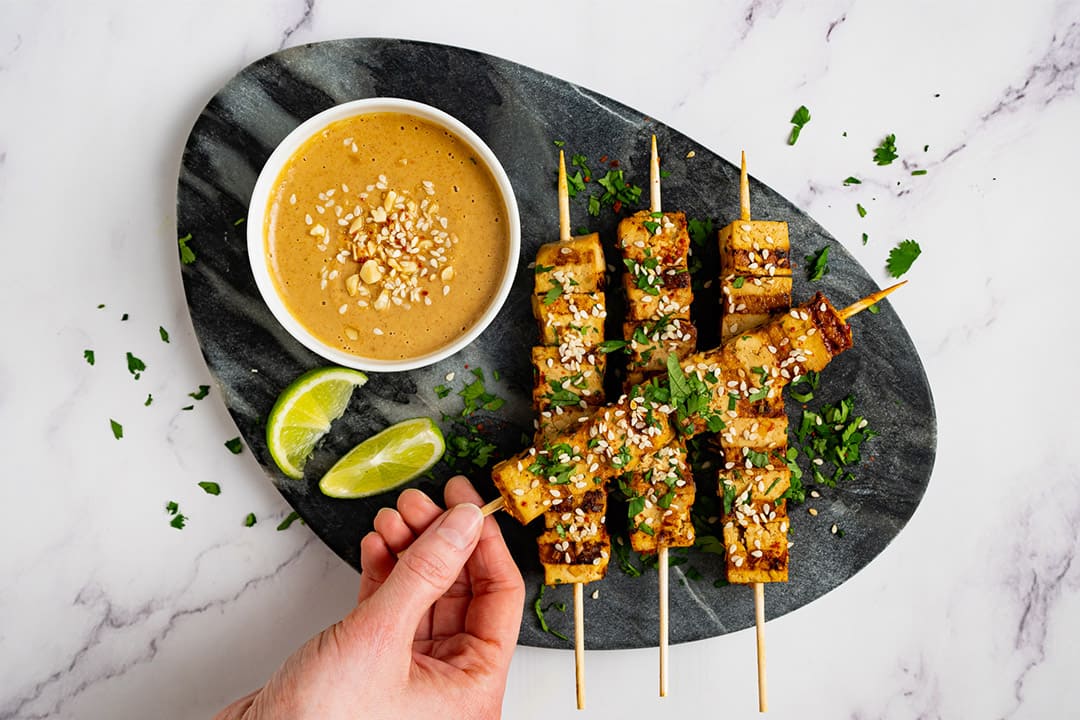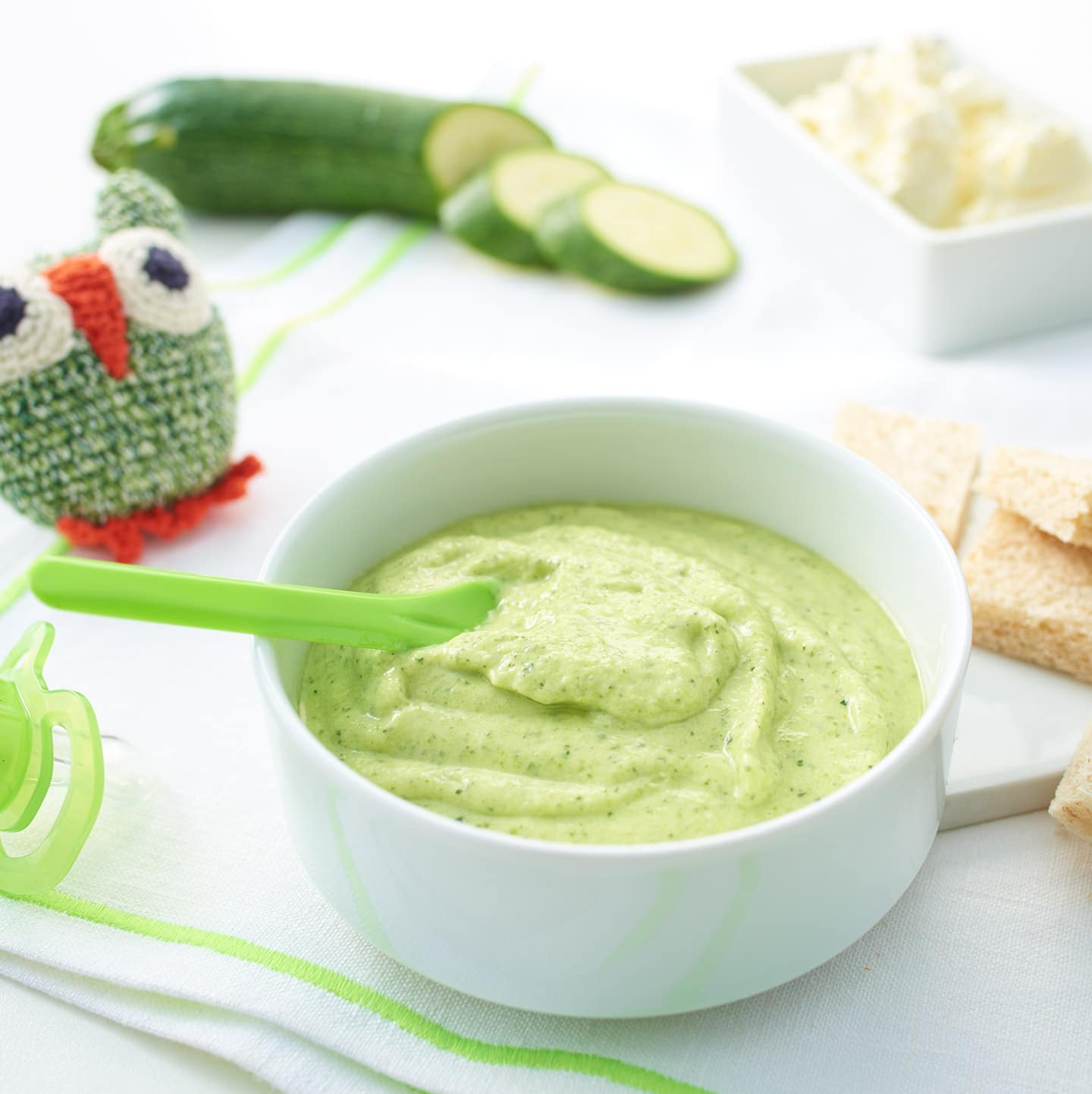How do I start?
Purées are the best way to introduce your baby to a mixed diet. These smooth mixtures of fruit, vegetables or baby rice (a vitamin and iron-enriched, sugar-free milky tasting form of powdered rice) are easily prepared using your Braun MultiQuick hand blender. To begin with, keep purées quite runny and very smooth using your Braun MultiQuick hand blender on a high speed - bananas are a particular favourite. Use water, breast milk or formula to achieve the right consistency.
You should always peel fruit and remove stalks, pips and seeds. It is important to know that most fruits and vegetables need to be cooked before serving in order to soften optimally. You can introduce lentils at this initial stage. However, with other pulses such as peas, chickpeas and beans, it is important to achieve a soft consistency and puree them thoroughly. It is therefore advisable to reserve these nutritious foods for the later stages of weaning to ensure a desirable consistency.






















